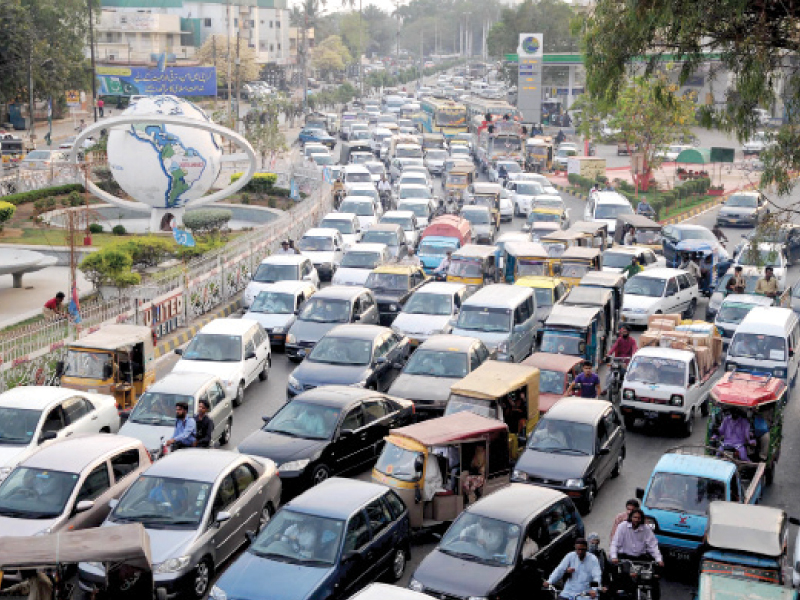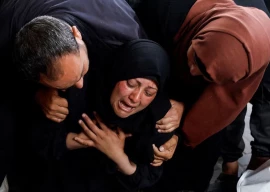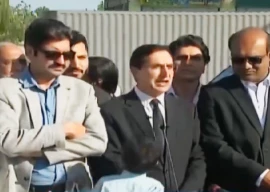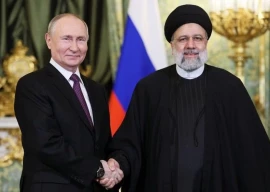
KARACHI:
Rapid population growth and the failure of planning and implementation agencies in Karachi to adequately develop and manage the requisite urban infrastructure has had many adverse consequences for the city.
Perhaps the most visible manifestation of an on-going urban governance crisis is to be found in the transportation sector. Karachi, a city of 18 million people, has yet to be provided with a decent, state-of-the-art and viable urban mass transit system.
Numerous plans and studies have been carried out. These include the MRV Master Plan 1952, the Karachi Rapid Transit Study 1974, the Karachi Transportation Master Plan 1985, the Karachi Mass Transit Study 1990, the Karachi Circular Railway (KCR) Improvement Study 1990, the Karachi Mass Transit System (KMTS) Priority Corridor 1 1994, the KMTS Priority Corridor 2 1994, the BOT Contract on Corridor 1, 1996, the KMTA and NMTA Implementation Plan 1997, and the Study for Karachi Transportation Improvement Project, 2010
There has been for quite some time a focus on revitalising the KCR system. More recently, the government has revealed a plan to introduce the Bus Rapid Transit (BRT) system. These initiatives are commendable in the sense that the authorities are finally giving ‘public transit’ the priority it deserves. However, some concerns can be identified in terms of an apparent lack of coordination and institutional interface between the various initiatives being undertaken.
A mass transit system, for it to have a viability and functional proficiency, has to be an ‘integrated’ system, where various modes of public transport at various levels are interwoven to create a cohesive transportation network working under ideally a unified institutional umbrella. This requirement, it appears is missing.
For one, it is quite evident that the KCR would not in itself become the prime mover of public commuters in Karachi. The city has spread a lot since the time the KCR was originally laid out. Even then, KCR, with the basic infrastructure already in place, offers a unique and logical mode of rapid mass transit system. It will help in greatly reducing the traffic load and congestion in the city, particularly in the inner city area, lowering pollution levels and cutting down on energy and time losses.
However, it can only play an important part of a larger and multifaceted urban mass transit system in Karachi city. How the KCR system will find synergy with the RBT system, with the two complementing each other, is not clear as the institutional contexts are different and the BRT plan is beginning to take shape just now while the KCR planning had already been completed sometime back.
In addition, while these plans are being discussed, the construction of flyovers that target private vehicles goes on in full swing in critical transportation corridors, making it more difficult to put in place a continuous on-grade or grade separated ‘public mass transit’ system.
It is also not yet clear how the transition will be made from the presently pathetic and mostly un-regulated private sector control of public transportation modes, such as mini buses and Qingqis, to supposedly, better regulated and institutionalised management models of public transport.
Are all the stakeholders on board? How are possible conflicts going to be resolved? How will the transportation-related institutional mechanisms coordinate with other public sector entities, such as land development and regulating authorities, and water and power utilities? Re-engineering and remodelling an urban transportation language for a city has direct consequences for the urban land use dynamics of the city. Are such scenarios being considered in a city known for a serious disconnect between multiple land owning agencies? These are important questions that need to be considered.
It is hoped that this present momentum gained for prioritising the public transport needs of the city is maintained and the planned projects are implemented with cohesion and farsightedness. Otherwise it is felt that they would end up just adding to the long list of plans for the city that never saw the light of day.
The writer is an urban planner and runs a non-profit organisation based in Karachi city focusing on urban sustainability issues
Published in The Express Tribune, June 3rd, 2014.
COMMENTS (1)
Comments are moderated and generally will be posted if they are on-topic and not abusive.
For more information, please see our Comments FAQ





















1713281138-0/US-Treasury-Secretary-Janet-Yellen-(2)1713281138-0-270x192.webp)
















The planners are very farsighted; they have their sights firmly set on an early and very comfortable retirement in Dubai, London, Toronto, Washington DC, New Jersey or Houston!